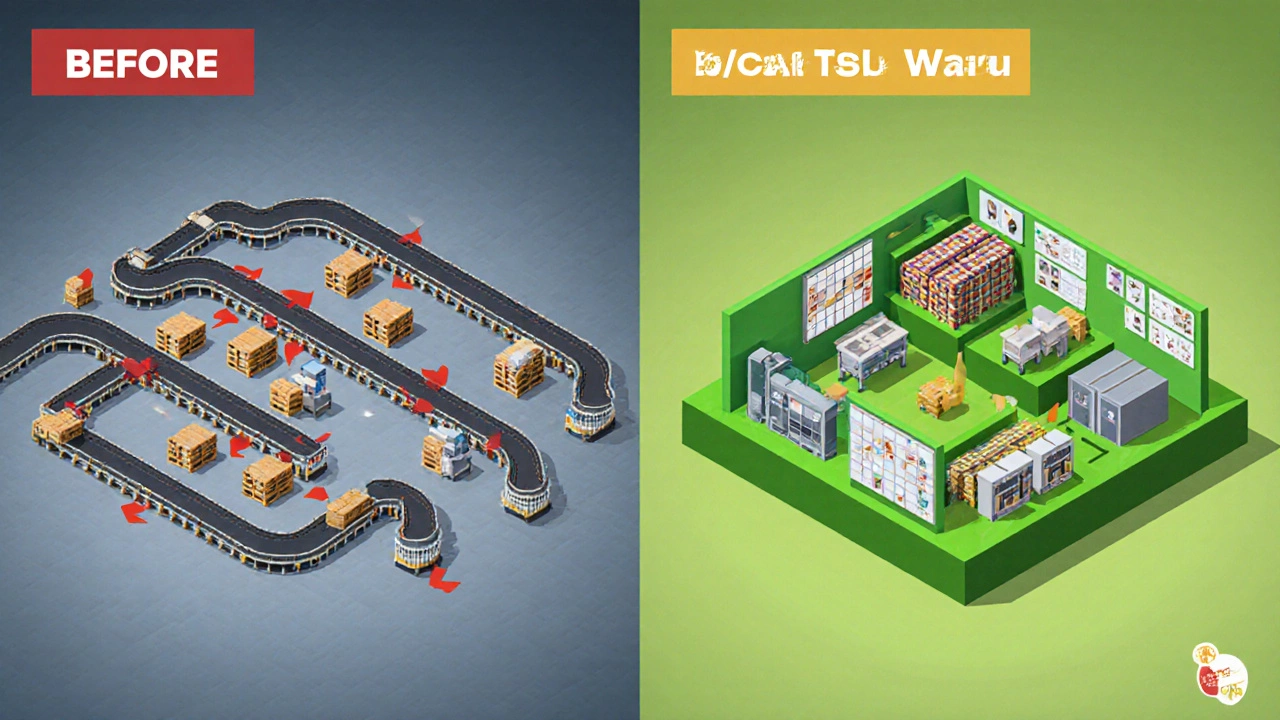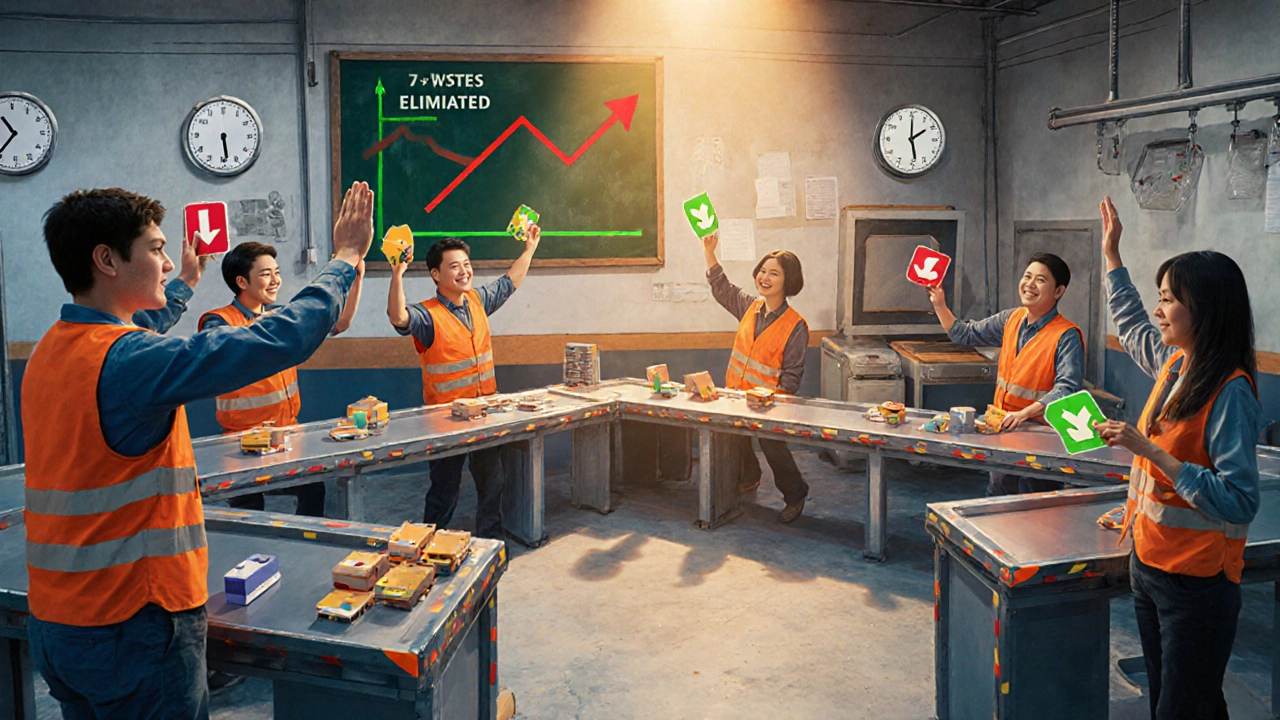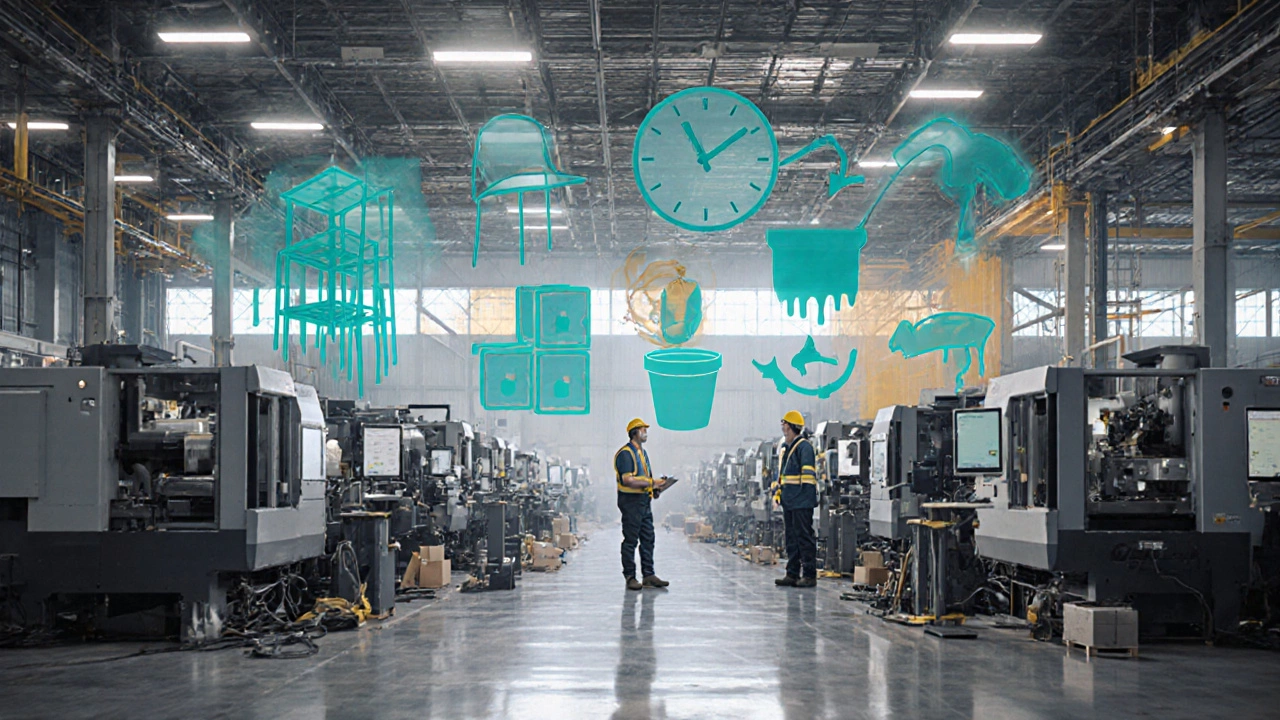Waste Impact Calculator
Calculate Your Manufacturing Waste Costs
Ever wondered why a production line can feel like it’s constantly fighting an invisible enemy? That enemy is manufacturing waste, and most of it falls into seven classic categories that every lean practitioner learns early on. Knowing the 7 wastes not only helps you trim costs, it also frees up capacity for new product ideas - a huge boost for any manufacturing startup.
When you hear “Seven Wastes of Manufacturing” you’re really looking at the backbone of the Lean Manufacturing philosophy. Lean Manufacturing is a systematic approach that aims to maximize value while minimizing waste. It originated in the Toyota Production System (TPS) after World WarII and has since become the gold‑standard for process improvement across industries.
1. Overproduction - The Silent Profit Killer
Overproduction occurs when you make more items than the next step needs, or more than customers will buy. A 2023 Lean Enterprise Institute survey found that overproduction accounts for roughly 30% of total waste in midsize factories. The hidden cost? Extra inventory holding, higher energy use, and a greater chance of obsolescence. Real‑world example: a small Brisbane furniture startup produced 5,000 chairs in a month but only sold 2,800. The surplus tied up $150,000 in raw material and storage.
2. Waiting - Time Is Money
Waiting shows up as idle machines, workers staring at empty pallets, or delayed approvals. In a 2022 case study of an electronics manufacturing plant in Shenzhen, waiting time cut throughput by 12%. The cure? Level‑loading schedules and visual kanban signals that tell everyone exactly when a part is needed.
3. Transportation - Moving Anything Is a Cost
Every time a part travels between stations you add handling, risk of damage, and time. A food‑processing line in Melbourne reduced transportation waste by reorganizing work cells, cutting travel distance by 40% and saving $200,000 annually on labor.
4. Processing - Doing More Than Required
Processing waste appears when you add features or steps that don’t add value for the customer. Think of a textile manufacturer that dyes fabric twice for a shade that could be achieved in one pass. The extra cycle consumes 15% more water and chemicals, inflating both cost and environmental impact.
5. Inventory - The Hidden Capital Drain
Holding extra raw material, work‑in‑process, or finished goods ties up cash and increases the chance of spoilage. In a pharmaceutical plant, excess inventory led to a 5% write‑off due to expiration. Implementing a pull‑based system helped the plant align production with real demand, freeing up $3million in working capital.

6. Motion - Unnecessary Human Effort
Motion waste includes reaching, bending, or walking more than needed. An ergonomics audit at a steel fabrication shop showed that workers spent 20% of their shift walking between stations. Redesigning the layout reduced motion waste, lowered injury rates, and boosted output by 8%.
7. Defects - The Costliest Mistake
Defects force rework, scrap, and warranty claims. In a 2021 audit of a plastic injection molding company, defect rates of 2.5% cost the firm $500,000 per year. By adopting poka‑yoke (mistake‑proofing) devices, the company slashed defects to 0.4% and saved $350,000.
Putting the 7 Wastes into Action - A Quick Checklist
- Map your current value stream - identify each step and ask if it adds value.
- Quantify each waste - use data like inventory levels, lead times, and defect counts.
- Prioritize high‑impact wastes - focus first on overproduction and defects, which often yield the biggest savings.
- Apply simple fixes - kanban, 5S, visual controls, and standardized work are low‑cost tools.
- Track improvements - use a dashboard to monitor key metrics such as cycle time and scrap rate.
Comparing the 7 Wastes Across Industries
| Waste Type | Typical Impact | Common Mitigation |
|---|---|---|
| Overproduction | Excess inventory, tying up capital | Pull systems, demand forecasting |
| Waiting | Idle resources, longer lead times | Level‑loading, cross‑training |
| Transportation | Higher labor, risk of damage | Cellular layout, minimizing moves |
| Processing | Unnecessary steps, higher cost | Standardized work, value analysis |
| Inventory | Capital lock‑up, spoilage risk | Just‑in‑time, Kanban limits |
| Motion | Ergonomic strain, lost time | 5S, ergonomic workstation design |
| Defects | Rework, scrap, warranty costs | Poka‑yoke, quality gates |

Real‑World Success Stories
One Australian small‑scale metal fabricator applied the 7‑waste framework to a custom‑stamping line. Within six months they eliminated 2 hours of waiting per shift and cut defect rates from 3% to 0.7%. The result was a 15% boost in output and a $120,000 reduction in operating costs.
Another case involves a textile startup in Bangladesh that used 5S and kanban to shrink transportation waste. By reorganizing the floor, they decreased part travel distance by 35% and saved enough energy to offset 200tonnes of CO₂ annually.
Tips for Start‑ups: Embedding Waste Elimination Early
- Design your layout for flow. Even a modest floor plan can be arranged in a U‑shape to minimize motion and transportation.
- Teach every team member the 7 wastes - the more eyes spotting waste, the faster it disappears.
- Use low‑cost visual cues - colored floor tape, shadow boards, and simple kanban cards work wonders.
- Measure before you act - a baseline of cycle time, inventory, and defect rate gives you a clear target.
- Iterate quickly - apply Plan‑Do‑Check‑Act (PDCA) cycles to test changes on a single cell before scaling.
Next Steps - From Theory to Implementation
- Gather a cross‑functional team and walk the current process together.
- Identify the top three waste categories that hurt your line the most.
- Pick a simple improvement tool (kanban, 5S, or poka‑yoke) and apply it to one waste.
- Record the before‑and‑after metrics, then celebrate the win with the crew.
- Repeat the cycle, expanding the scope each time.
Frequently Asked Questions
What exactly is a "waste" in lean manufacturing?
A waste (or "muda") is any activity that consumes resources without creating value for the customer. The classic framework lists seven specific forms, but the underlying idea is to ask, “Does this step add something the buyer is willing to pay for?”
How can a small startup track the 7 wastes without expensive software?
Start with simple visual tools: whiteboards for kanban, sticky notes for process steps, and a basic spreadsheet to log inventory levels, wait times, and defect counts. The key is consistency, not technology.
Is overproduction always a waste, even if it prevents stock‑outs?
Overproduction is a waste when it creates excess inventory that ties up capital, space, or risks obsolescence. If the safety stock is calculated based on real demand variability, it’s a strategic buffer, not a waste.
What’s the fastest way to reduce defect rates?
Introduce poka‑yoke (mistake‑proofing) at the point of highest error - often a machining or assembly step. Simple fixtures, sensors, or jigs catch mistakes before they become defects.
Can the 7 wastes framework be applied to service businesses?
Yes. The same categories translate to service steps - for example, waiting appears as idle call‑center agents, and motion shows up as redundant data entry. Adapting the language helps any organization cut non‑value‑adding work.
